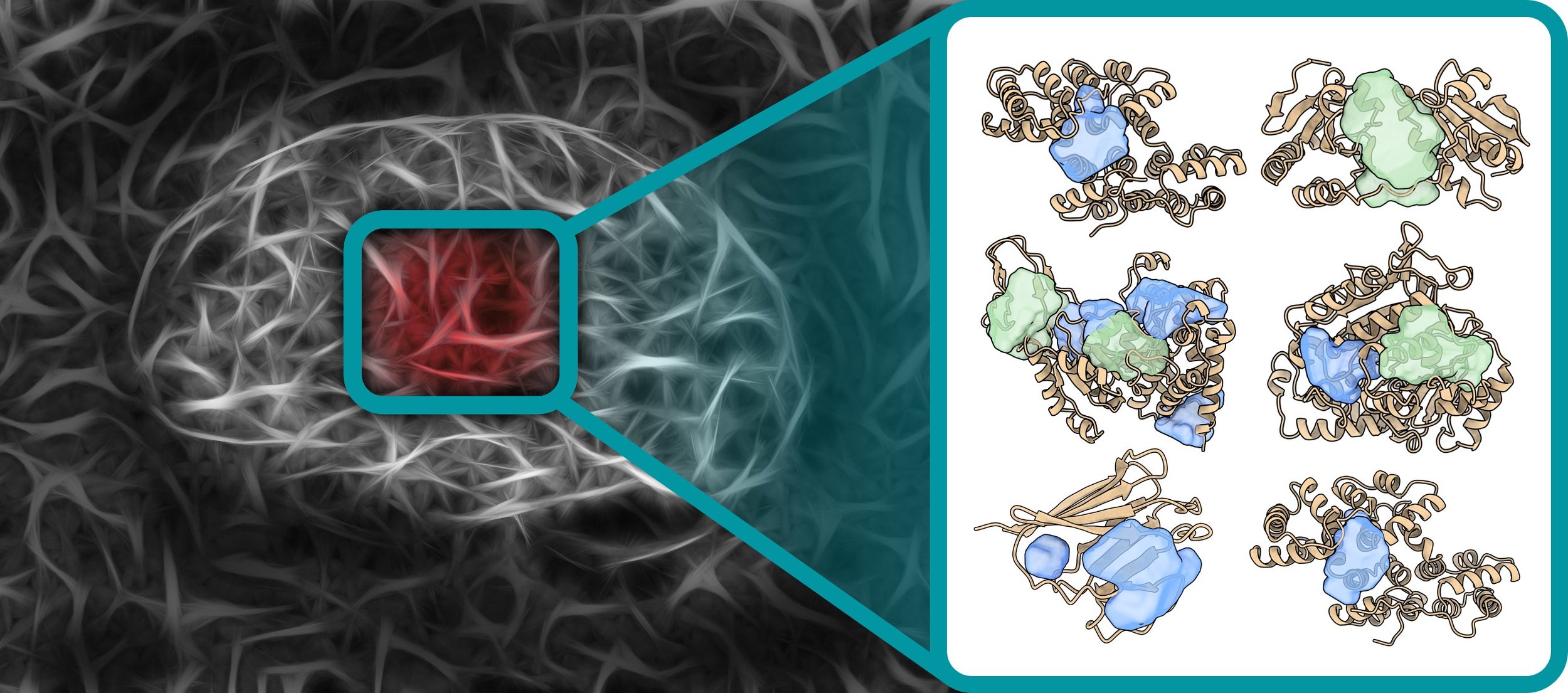Press Release: October 20th, 2023
STEM Biomedical
Computational biology research identifies potential targets for new therapeutic development against brain cancer
KITCHENER-WATERLOO, Ontario, Canada ― Glioblastoma is the most frequently occurring type of brain cancer and often doesn't respond well to treatment. Unfortunately, the majority of patients do not live more than a few years after diagnosis. Ongoing research efforts have been devoted to understanding the underlying biology of the disease, a critical aspect for therapeutic development. Previous work has uncovered that a number of proteins are upregulated, meaning they are present in higher quantities, in glioblastoma tumors.
New research by STEM Biomedical has now identified a subset of these upregulated proteins which exhibit properties potentially suitable for therapeutic targeting. In simple terms, these proteins can be considered to contain locks. The research team has found the "keyholes" in these locks where therapeutic agents can potentially fit in and block their activity. Some of these protein locks even have known keys that fit them, providing a head start for therapeutic development.
The idea is that targeting these proteins all at once might provide a better way to treat glioblastoma. However, creating therapeutic agents for these proteins is not a simple task: they not only need to fit the protein locks, but they also must be effective at disrupting the proteins. Furthermore, the researchers emphasize that new treatments should be designed in a way that only affects the cancer cells and doesn't harm the rest of the body.
Emily Anas (left) and Emma Hoover (right), co-first authors of the research.
Despite the preliminary nature of the study, the researchers are optimistic. They hope that these findings will aid in accelerating the development of much needed treatments for glioblastoma patients. The full research article which was published in the journal Brain Research can be found online on the journal's website: https://doi.org/10.1016/j.brainres.2023.148623
Reference
This research was supported in part by CIBC
Anas, E., Hoover, E., Ille, A.L., Ille, A.M., & Amico-Ruvio, S. (2023). Towards multi-target glioblastoma therapy: Structural, distribution, and functional insights into protein target candidates. Brain Research. https://doi.org/10.1016/j.brainres.2023.148623
STEM Biomedical is a federally-registered Canadian non-profit dedicated to the advancement of biomedical research through the fields of science, technology, engineering, and mathematics (STEM).
For more information on this topic, please contact us by email through our contact form.
Press Release: October 20th, 2023
Computational biology research identifies potential targets for new therapeutic development against brain cancer
Kitchener-Waterloo, Ontario, Canada ― Glioblastoma is the most frequently occurring type of brain cancer and often doesn't respond well to treatment. Unfortunately, the majority of patients do not live more than a few years after diagnosis. Ongoing research efforts have been devoted to understanding the underlying biology of the disease, a critical aspect for therapeutic development. Previous work has uncovered that a number of proteins are upregulated, meaning they are present in higher quantities, in glioblastoma tumors.
New research by STEM Biomedical has now identified a subset of these upregulated proteins which exhibit properties potentially suitable for therapeutic targeting. In simple terms, these proteins can be considered to contain locks. The research team has found the "keyholes" in these locks where therapeutic agents can potentially fit in and block their activity. Some of these protein locks even have known keys that fit them, providing a head start for therapeutic development.
The idea is that targeting these proteins all at once might provide a better way to treat glioblastoma. However, creating therapeutic agents for these proteins is not a simple task: they not only need to fit the protein locks, but they also must be effective at disrupting the proteins. Furthermore, the researchers emphasize that new treatments should be designed in a way that only affects the cancer cells and doesn't harm the rest of the body.
Emily Anas (left) and Emma Hoover (right), co-first authors of the research.
Despite the preliminary nature of the study, the researchers are optimistic. They hope that these findings will aid in accelerating the development of much needed treatments for glioblastoma patients. The full research article which was published in the journal Brain Research can be found online on the journal's website: https://doi.org/10.1016/j.brainres.2023.148623
This research was supported in part by CIBC
Anas, E., Hoover, E., Ille, A.L., Ille, A.M., & Amico-Ruvio, S. (2023). Towards multi-target glioblastoma therapy: Structural, distribution, and functional insights into protein target candidates. Brain Research. https://doi.org/10.1016/j.brainres.2023.148623
Reference
STEM Biomedical is a federally-registered Canadian non-profit dedicated to the advancement of biomedical research through the fields of science, technology, engineering, and mathematics (STEM).
For more information on this topic, please contact us by email through our contact form.




